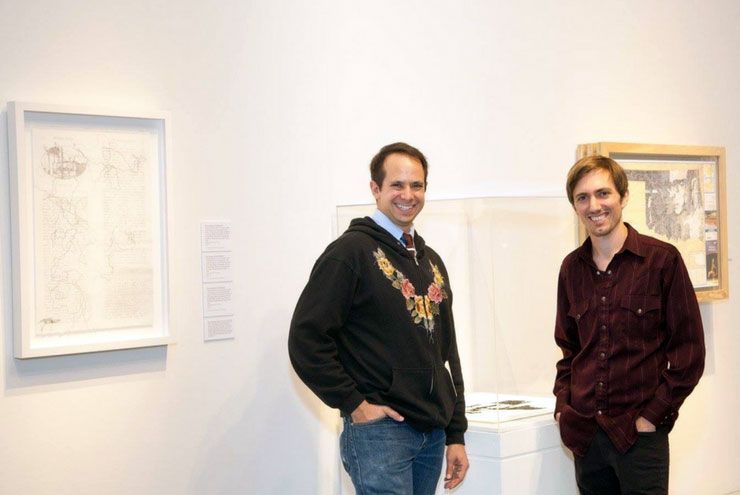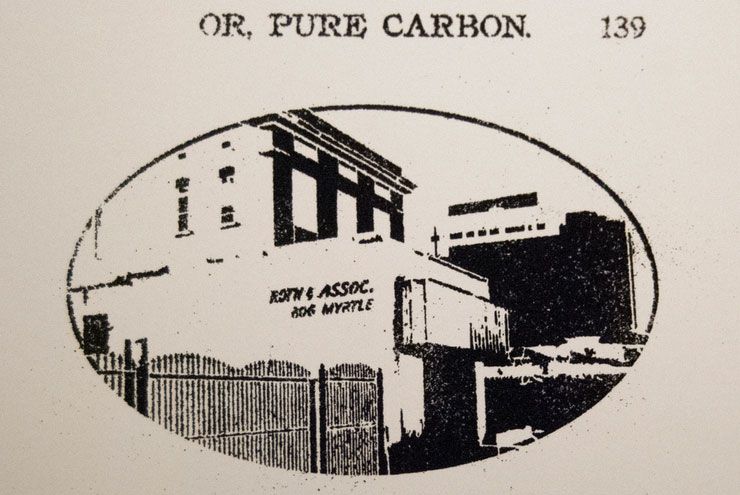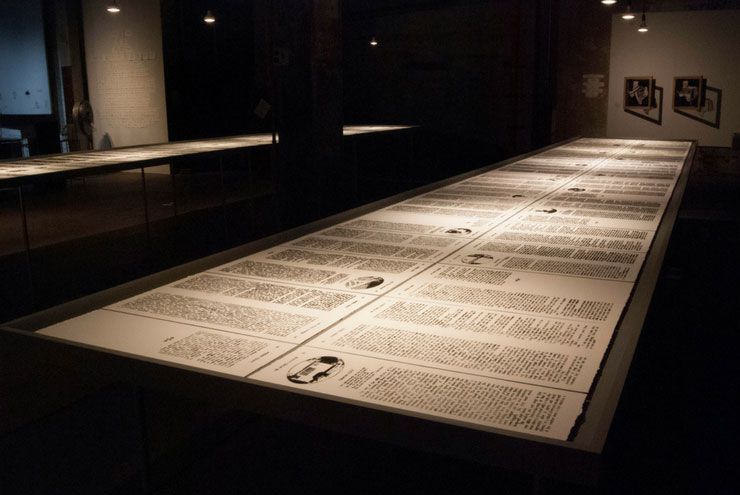By Josh Inocéncio
A few years ago, visual artists and married couple Nick Vaughan and Jake Margolin stumbled upon some little-known 19th century queer history in William Benemann’s Men in Eden. This uncovered book charts the journey of William Drummond Stewart, a Scottish lord turned fur trader, and his male lover Antoine Clement as they led an expedition of around a hundred men from St. Louis to what is now Wyoming. Inspired by this caravan of same-sex loving men, Vaughan and Margolin crafted an installation piece.
“We ended up making a large piece based on that narrative,” recalls Vaughan. “In making it, we spent a lot of time in Wyoming. I grew up in Colorado originally and Wyoming was always this unfriendly territory. It was this land of Dick Cheney and Matthew Shepard. But walking through Wyoming with the knowledge that—before they’d even finished surveying the Oregon Trail—this land had been the stomping ground of a band of liberated same-sex attracted men on an expedition/pleasure party was an absolute paradigm shift in how we thought about the state.”
Thus, Vaughan and Margolin, both New York City-based artists at the time, decided to expand this project and create installation pieces around a bit of queer, pre-Stonewall history in each of the 50 U.S. states. “We were living in New York and thought we’d do this project from the city,” says Margolin. “Then we took a research trip through Texas and Colorado and realized very quickly that wasn’t going to work. The project was going to require us to live in [each of] the states for a long period of time, not just helicoptering in. So, we picked up and moved to Houston.”

Artists Jake Margolin (l) and Nick Vaughan.
Knowing that they’d actually need to live in each state to get to know queer locals and conduct in-depth research, Vaughan and Margolin dramatically expanded the timeline of their project to occupy the next 35 years. The pair took a three-week road trip across the United States to capture the lay of the land, and ultimately decided to settle in Houston because of its vibrant arts community and proximity to a major airport.
Living in Houston changed Vaughan and Margolin’s expectations about the southern state. “Before we moved to Texas, we were interested in cowboy culture and border towns—things one is obsessed with from afar—but after spending time here, that piece ended up being about a lesbian novel written out of La Grange,” says Vaughan.
Their Texas piece is inspired by the 1895 novel Norma Trist; or Pure Carbon: A Story of the Inversion of the Sexes by medical doctor John Wesley Carhart—a fictional story of a school-aged woman in love with her female music teacher. When the younger woman finds out her teacher is engaged to a man, she stabs her. Vaughan and Margolin’s installation lays out the entire novel, printed in unfixed stenciled graphite powder and left open to the environment to degrade and eventually disappear over time. In addition, Margolin and Vaughan illustrate each chapter with an image of what is currently standing in the historic location of gay and lesbian bars across Texas—“a fragile monument…to the many bars and nightclubs that nurtured Texas’s resilient queer community.”

Margolin and Vaughan illustrate each chapter of the Texas installation with an image of what is currently standing in the historic location of gay and lesbian bars across Texas. Photo courtesy Jake Margolin and Nick Vaughan.
Given the artists’ interdisciplinary experience, the media for each installation varies state to state. For example, the Oklahoma piece—which they created through a fellowship in Tulsa—is a video installation that portrays “out, celebratory daily queer life in one of our nation’s most socially conservative states.” “We’re literally all over the map,” says Margolin. “We choose what media we’re going to be using after we figure out the narrative we’re working with and how we want to best honor and create something around it.”
While their backgrounds are eclectic, Vaughan and Margolin draw from a concentration on the narrative. They both come from theatre backgrounds—Vaughan designed sets and costumes, while Margolin wrote, directed, and performed. “A French artist came in and saw one of our pieces and said, ‘It’s so clear you’re theatre people! There’s narrative everywhere,’” recalls Margolin. “We find the emotional weight of things is in narrative.”
With Wyoming, Colorado, and now Texas and Oklahoma finished, the artists are turning next toward two states in the South: Arkansas and Louisiana. “We’re further along in our Arkansas piece,” says Margolin. “There was a man who ran a railroad in Harrison, Arkansas. He was white and he had an African-American live-in servant named Jesse. And this was a very unusual arrangement because in that town you didn’t have live-in servants. So there’s conjecture that they were a same-sex couple.”
And while they are still researching history for Louisiana, the artists know they want to focus on the New Orleans port and the Mississippi River—possibly on how showboat culture affected the iconic trade route. “If readers know people beyond Texas who know what we should research in each state, reach out and let us know,” says Margolin.
As far as their overall vision for this project that will require a huge chunk of their lives, Vaughan and Margolin hope for all 50 installations to one day be housed in a single university or museum. “We’re hoping that with each one of these [installations], we [gain] more ownership over American history and the lineage that has made our lives possible,” adds Margolin. “We hope to show how broad, rich, diverse, and complicated the history of queer people has been from before European contact to now.”
Vaughan and Margolin’s Texas installation can be seen as part of FotoFest in Houston from October 20-November 25. To read more about the 50 States project or the artists’ other work, check out their website.







